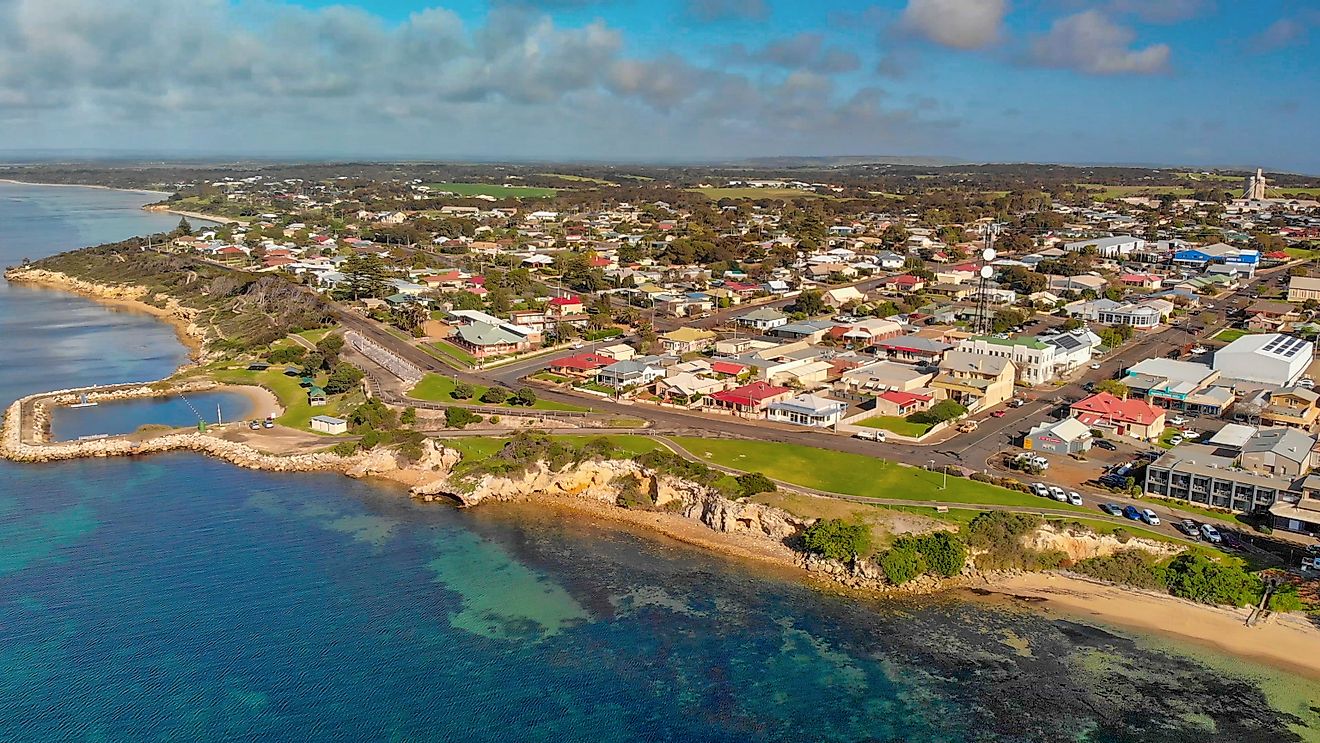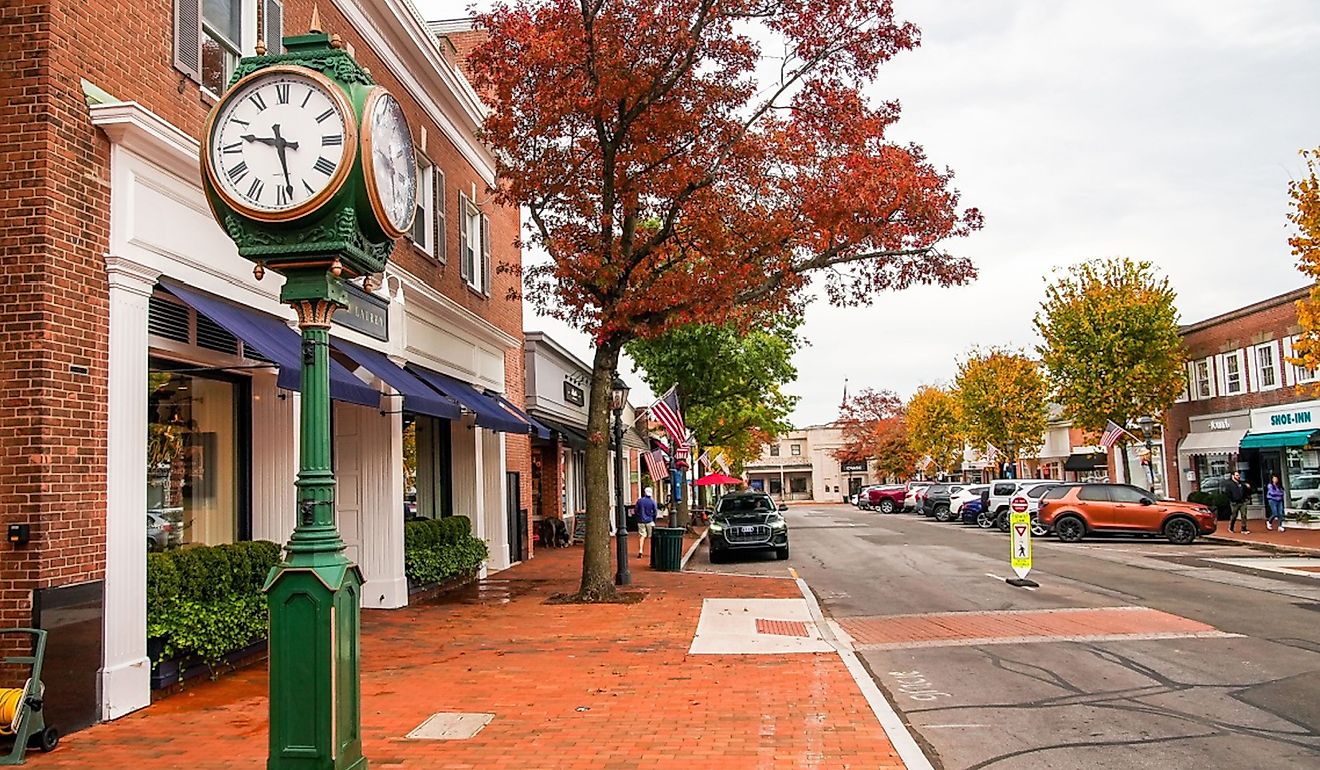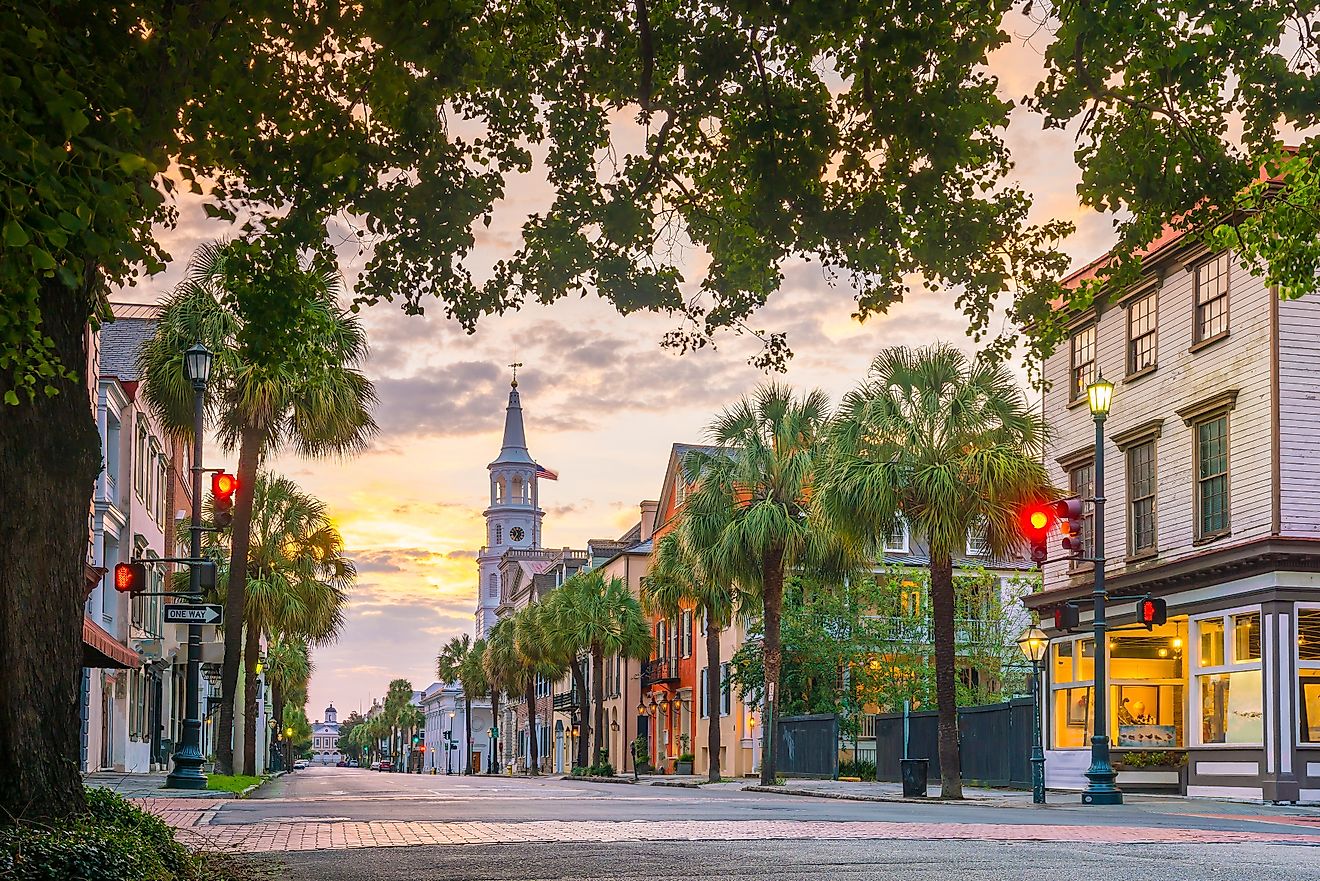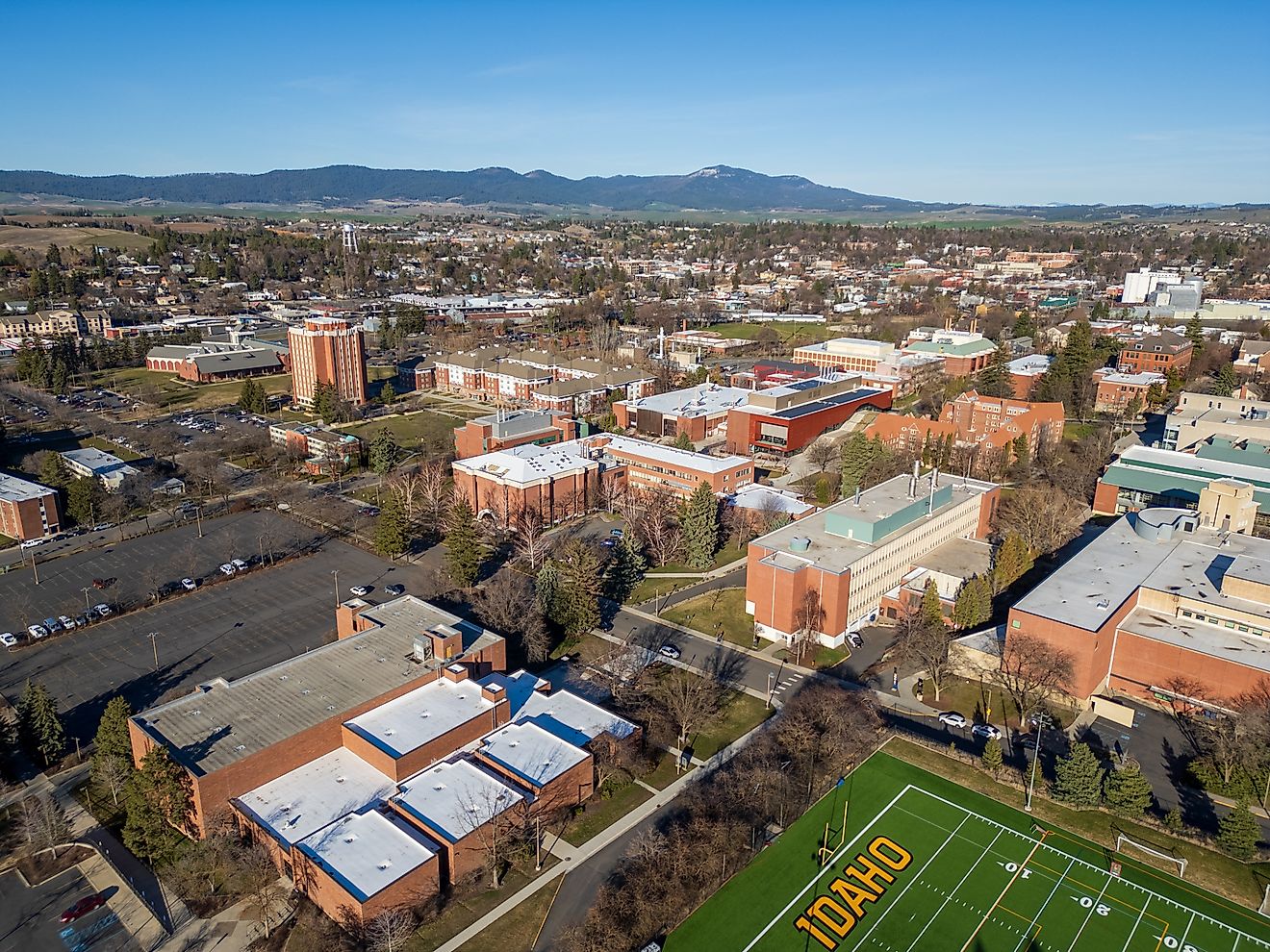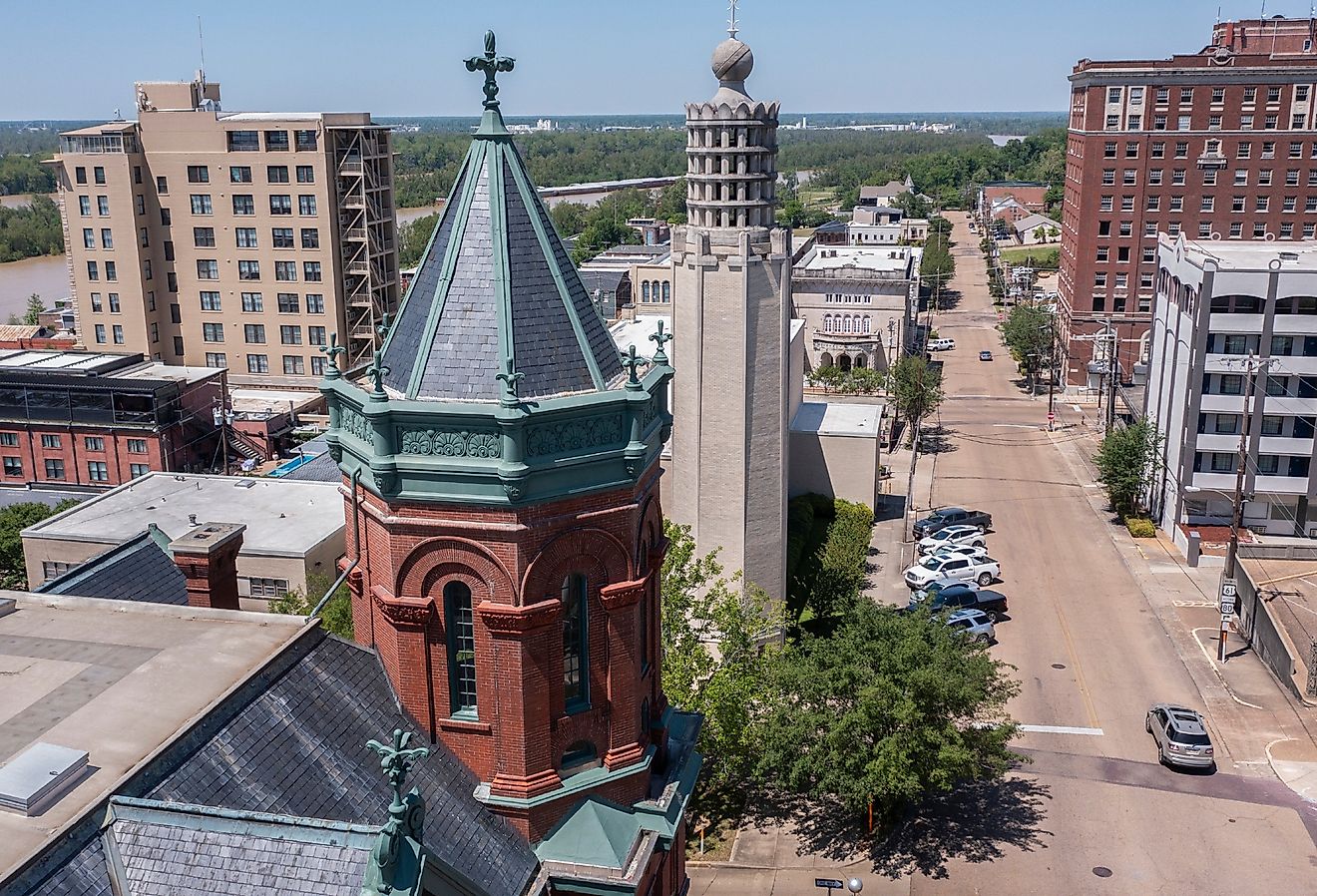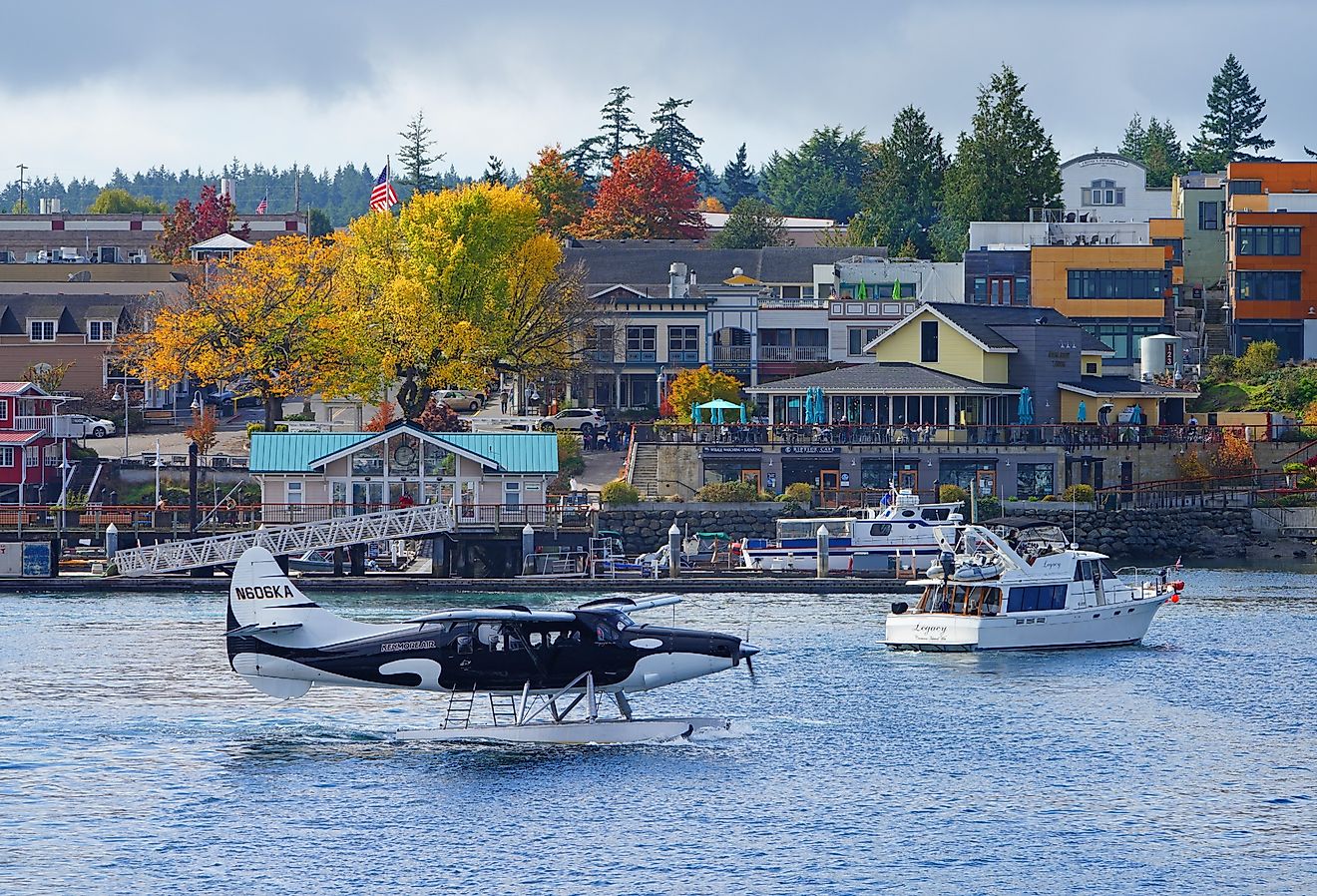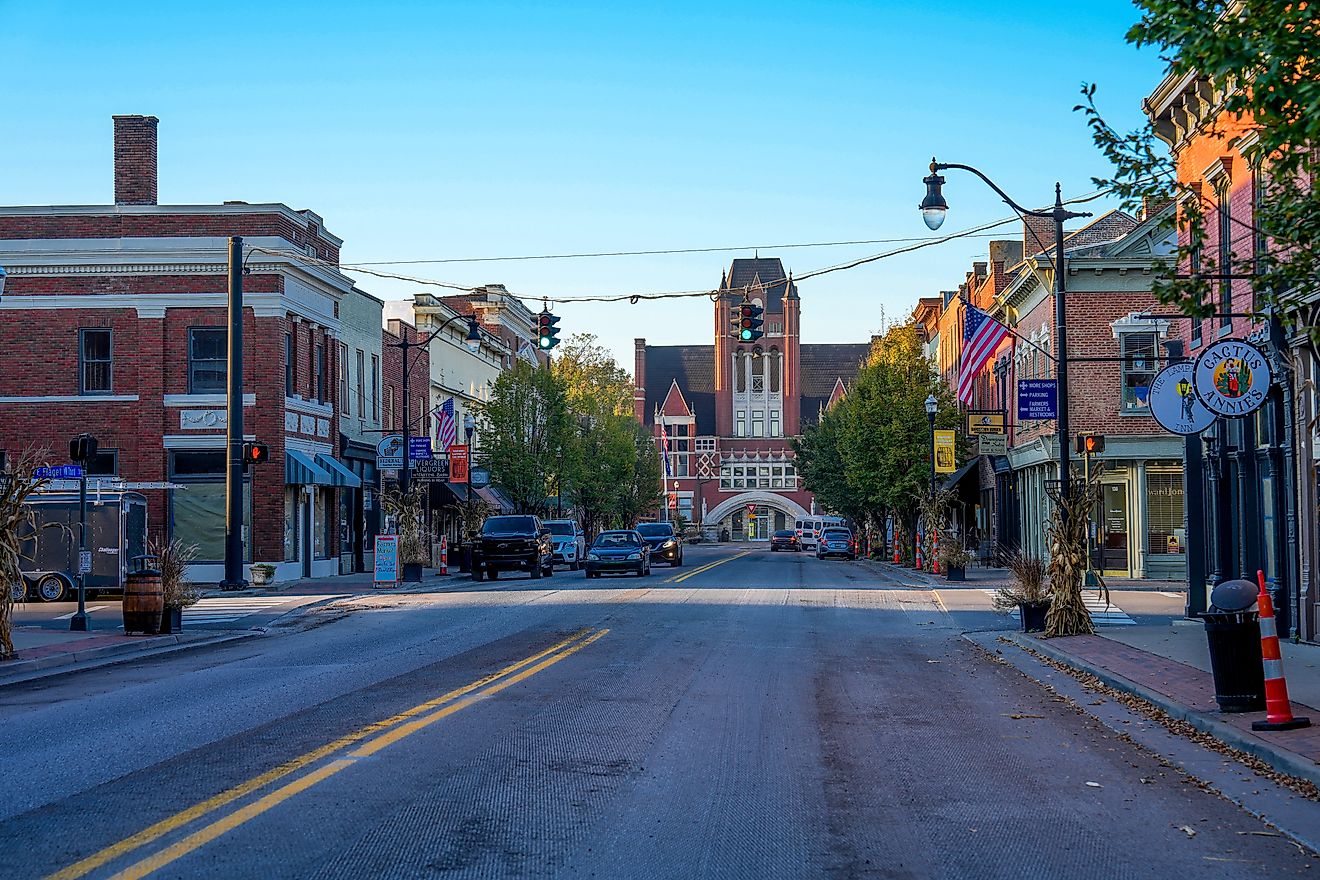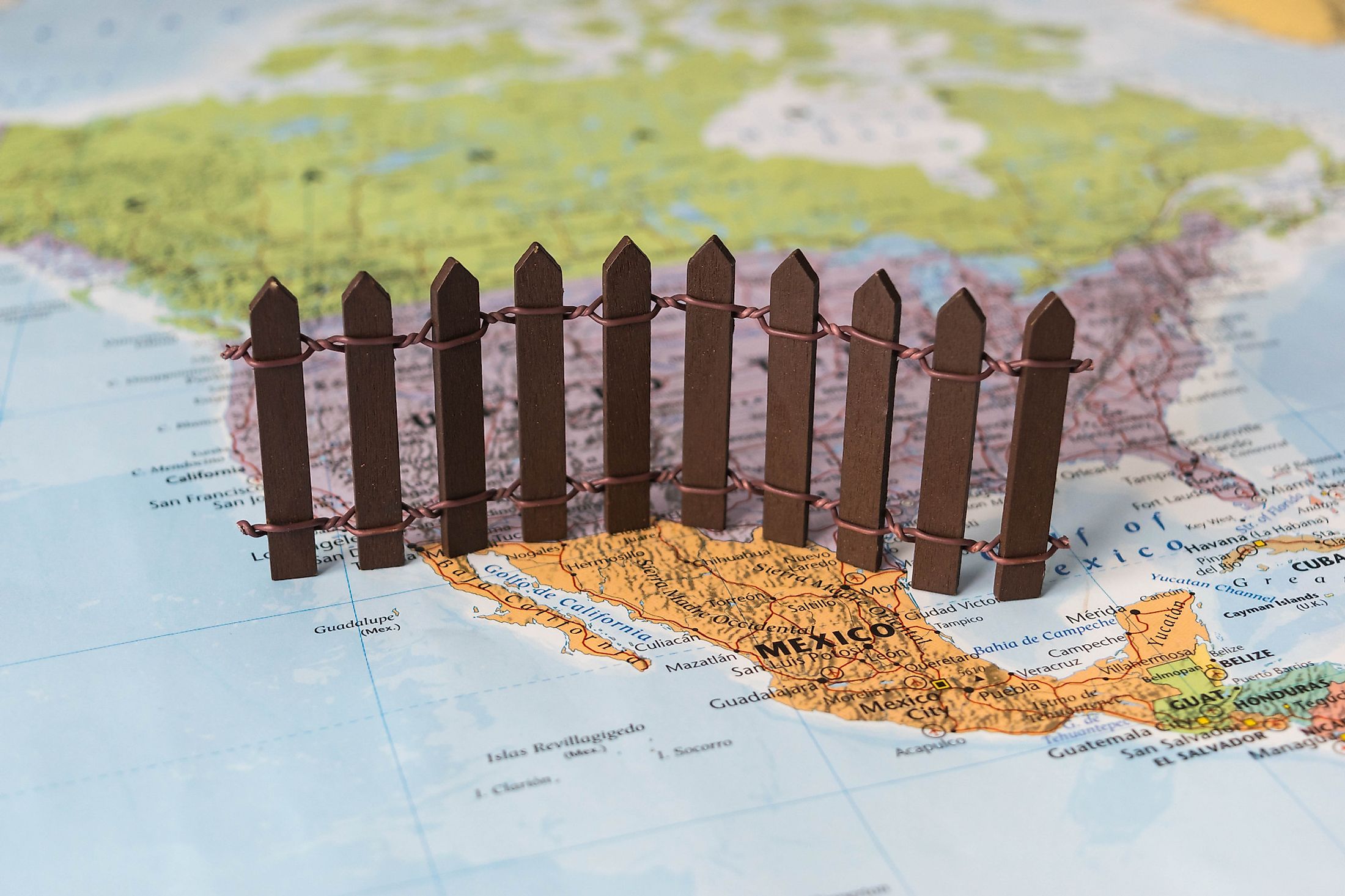
Mexico–United States Border
The US-Mexico border is a frontier that stretches for 3,110 km between the United States and Mexico. The eastern section of the border is a long river known as the Rio Grande, which separates the US state of Texas from several Mexican states. The western section is a land border that separates Mexico from the US states of New Mexico, Arizona, and California. The border was established by an agreement between the United States and Mexico in the mid-19th century. Ever since it was delineated, the border has been a focal point for controversy and passionate debate, mainly related to the flow of people that cross it from Mexico into the United States, though not exclusively.
History Of The US-Mexico Border
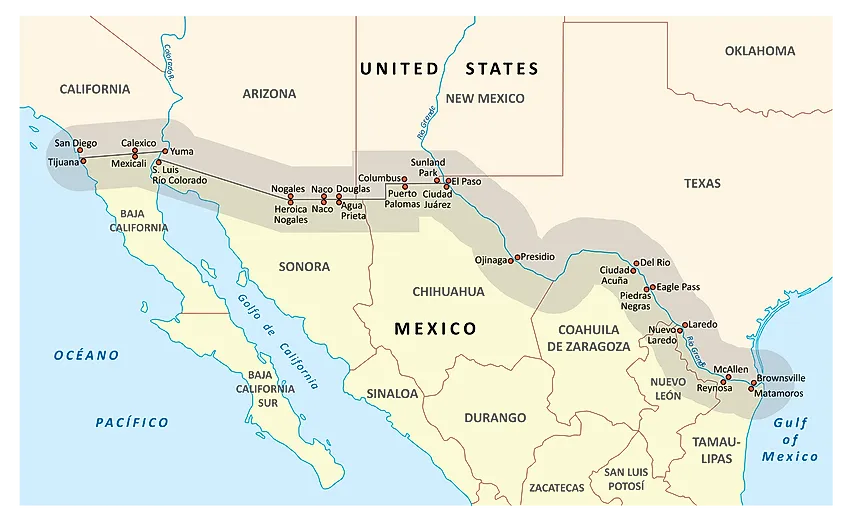
The story of the US-Mexico border, as it is configured today, begins with the Treat of Guadalupe Hidalgo in 1848, which ended the US-Mexican War. Under the terms of the treaty, Mexico ceded 55% of its northern territory to the United States, and also relinquished its claims over the future US state of Texas. Thus, the treaty established the border between the United States and Mexico as it exists today. In order delineate the border, the treaty created the Mexican-United States Boundary Commission, which was tasked with surveying and marking the exact boundary between the two countries.
Disputes between the United States and Mexico, however, did still occur after the border between the two countries was formally demarcated. One of these disputes was over the Mesilla Valley, which both countries claimed as their own. This dispute complicated American efforts to find a southern route for its transcontinental railroad, as the only viable routes all went through Mexican territory. The dispute was resolved in 1854, when the United States agreed to pay Mexico $15 million for 45,000 sq. miles of Mexican territory south of what was then the US Territory of New Mexico. This transaction was known as the Gadsden Purchase. The land that was part of this purchase is now part of the southern US states of Arizona and New Mexico.
Another dispute, known as the Chamizal Dispute, began in 1895, and involved 600 acres of territory located in the area of a town called El Paso, which is now situated on the American side of the US-Mexico border in southern Texas. In 1910, a commission consisting of the United States, Mexico, and Canada attempted to resolve this dispute, issuing recommendations in 1911, though the US government rejected these recommendations. The dispute was not resolved until 1963, when the United States did an about face and decided to accept the recommendations made in 1911.
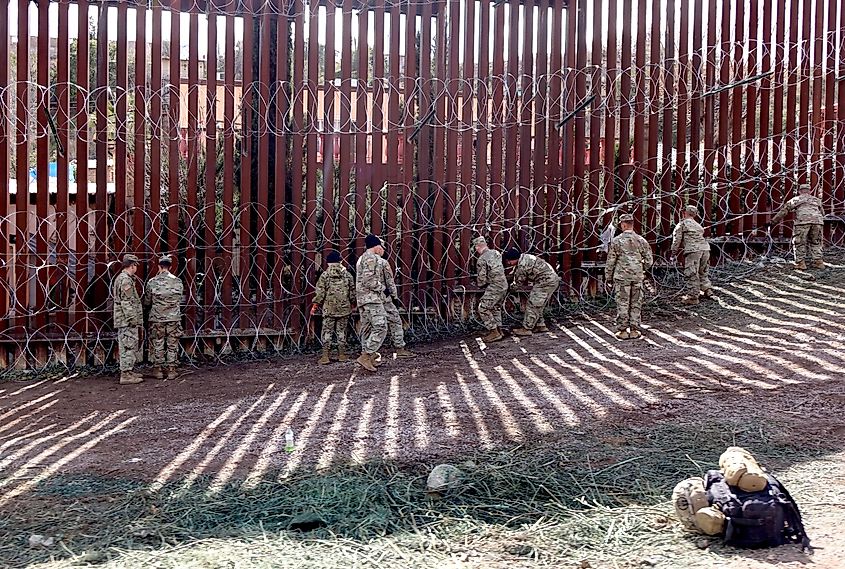
The first controversy pertaining to illegal immigrants crossing from Mexico into the United States via the US-Mexico border came in 1882, when the United States passed the Chinese Exclusion Act, which banned the immigration of Chinese people into the country. Despite this law, however, Chinese immigrants continued to cross into the United States using the US-Mexico border as a conduit. In 1917, the United States passed another law restricting immigration, which required anyone crossing the US-Mexico border to pay $8 and pass a literacy test. Six years prior, the first border fence on the US-Mexico border was built, though it was not intended as a way of preventing illegal immigration, but rather as a method of preventing cattle from Mexico entering the United States and potentially spreading cattle tick disease.
The year 1924 saw the creation of the first US Border Patrol. In the 1930s, during the time of the Great Depression, the United States deported more than one million people to Mexico, about 60% of whom were US citizens of Mexican origin. In 1942, the United States signed an agreement with Mexico allowing some Mexicans to enter the country as guest workers. Nevertheless, illegal immigrants continued to enter the United States via the US-Mexico border.
In 1954, the United States began what became known as Operation Wetback, which was arguably the first attempt by the Americans to deal with illegal immigrants crossing the US-Mexico border by using measures that are similar to today’s methods. Such measures included using Border Patrol agents to locate, process, and deport Mexicans who had entered the United States illegally. During this operation, more than one million people were returned to Mexico. In 1965, the United States passed the Immigration and Nationality Act, which capped the number of Mexicans that could enter the country legally.
In 1986, the United States passed the Immigration Reform and Control Act (IRCA), which was a watershed in US immigration history, as it established penalties for employers who hired illegal immigrants, thus encouraging illegal immigration. The law also increased border security at the US-Mexico border. But inasmuch as IRCA was intended to curb illegal immigration, it also facilitated giving status and eventually citizenship to many undocumented immigrants. This was the first time in US history that the government allowed for mass legalization of illegal immigrants.
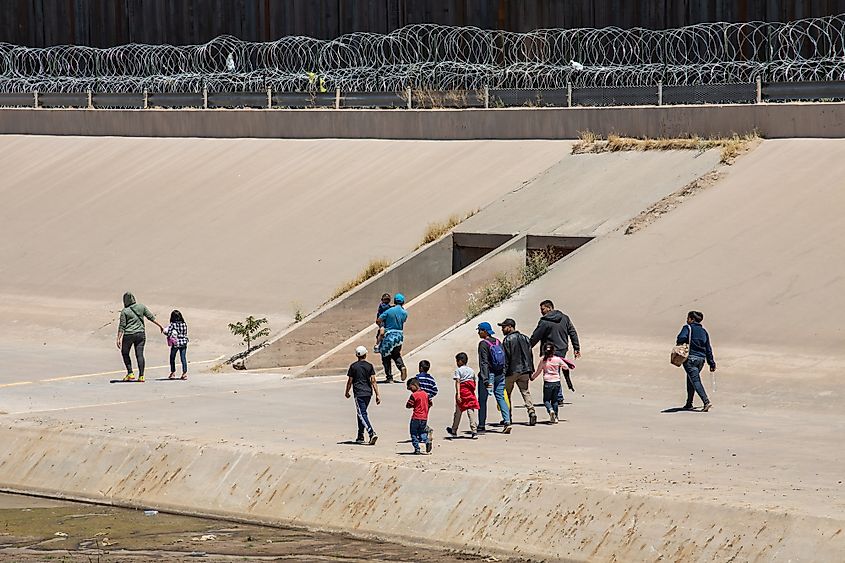
During the 1990s, the US government took a hard line on illegal immigration via the US-Mexico border. It stationed border agents and vehicles at the border every 100 yards to prevent illegal crossings. The 1990s also marked the mass expansion of fencing on the US-Mexico border. Fourteen miles of fence, for example was built between the US city of San Diego and the Mexican city of Tijuana. By 2011, 649 miles of fencing and vehicle barriers were built from California to Texas.
By 2016, the efforts of the US government to mitigate the flow of illegal immigrants on country’s border with Mexico seemingly paid off. During 2016, the number of Mexican immigrants who returned to Mexico was greater than the number of Mexicans who came into the United States. In addition, Mexico was no longer the top country of origin for recent immigrants into the United States. Mexicans, however, are not the only people that try to cross the US-Mexico border illegally. In 2018, for example, a caravan of 7,000 people from countries in Central America made the long trek to the US-Mexico border.
The US-Mexico Border Today
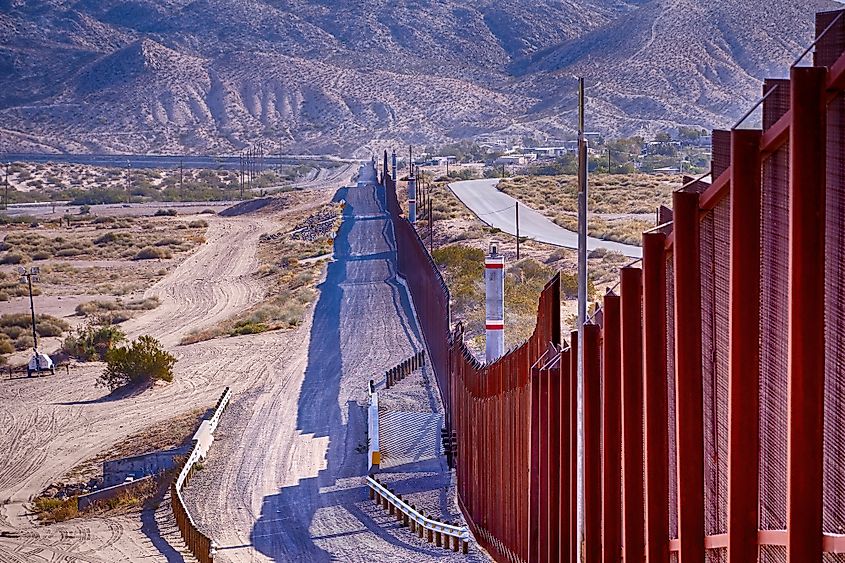
The border between the United States and Mexico continues to be a beacon of controversy. During his election campaign and subsequent presidency, for example, Donald Trump repeatedly called for the building of a wall along the US-Mexico border, to which his supporters responded with chants of “BUILD THE WALL!” President Trump also characterized Mexican immigrants as criminals, rapists, and drug dealers. Stories about the alleged mistreatment of illegal immigrants crossing the US-Mexico border have inundated the media in recent years. These stories include reports of illegal immigrants being imprisoned in mass detention centers and forced to live in cruel and unsanitary conditions. There have also been reports of the children of illegal immigrants being forcibly separated from their parents by US immigration authorities.
The issues pertaining to the US-Mexico border have generally been consistent for the last century or so. Illegal immigration is usually the issue that generates the most headlines, but it is certainly not the only one. Drug smuggling over the border, for example, has been a major problem for decades. Since the terrorist attacks of September 11, 2001, many have feared that terrorists could use the US-Mexico border as a conduit for entering the United States in order to perpetrate acts of terrorism. This concern is largely unfounded, however, as no one has been killed on US soil by terrorists who crossed the border from Mexico. In fact, between 1975 and 2020, only nine people convicted of terrorism offenses entered the United States illegally, and only three of these nine entered at the US-Mexico border. Moreover, these three were all children when they crossed into the United States from Mexico.
